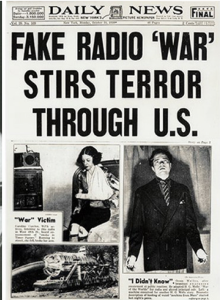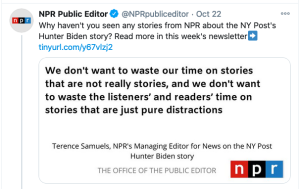A new memoir by former Washington Post media columnist Margaret Sullivan praises the newspaper’s Watergate reporters, Bob Woodward and Carl Bernstein, for having “lit the kindling” that set off investigations that brought down Richard Nixon’s presidency.

Sullivan
Such praise is misplaced. Exaggerated. A way to sidestep the tenacious media-driven myth that Woodward and Bernstein brought down Nixon while insisting their reporting had significant effects nonetheless.
The Woodward-Bernstein agenda-setting effect in Watergate was weak at best. The influence of their reporting, if it much existed at all, was shared influence.
After all, Woodward and Bernstein had plenty of company in reporting on the emerging scandal in the summer and fall of 1972. They very much were not alone in directing attention to suspected misdeeds of Nixon, his top aides, and officials of his reelection campaign.
While Woodward and Bernstein did some commendable reporting during those early days — such as tying the likes of former Attorney General John Mitchell to the scandal — other corporate news outlets scored significant beats as well.
The New York Times was first to report about the repeated phone calls placed to Nixon’s reelection campaign by one of the five burglars arrested June 17, 1972, inside Democratic National Committee headquarters at the Watergate complex in Washington, D.C. The calls were made before the break-in, the crime that touched off the scandal.
The Los Angeles Times published a breakthrough report in early October 1972, based on a detailed, on-the-record account by the burglars’ lookout man, Alfred C. Baldwin III.

Correction on page 111
Woodward and Bernstein acknowledged the Baldwin story’s significance, writing in their memoir All the President’s Men that its appearance prompted them to rush into print the following day with what proved to be an erroneous, front-page report.
They identified by name three men associated with Nixon’s White House or his reelection campaign who, Woodward and Bernstein reported, had been sent “memos describing wiretapped conversations of Democratic Party officials” at Democratic headquarters.
The Woodward-Bernstein story was disputed by the men and was acknowledged months later to have been in error. The correction, as it were, appeared more than 600 days later, on page 111 of All the President’s Men, which came out in June 1974. The reporters wrote that they “became convinced” that memos the three men received “had nothing to do with wiretapping.”
The article was among the nine Watergate stories in the Post’s winning Pulitzer Prize-entry in 1973.
As Edward Jay Epstein pointed out in his classic essay in 1974 about Watergate, the Post and other newspapers were joined in summer 1972 by the General Accounting Office, the investigative arm of Congress, and by Common Cause, a foundation promoting accountability in government, in calling attention to the emergent scandal.
Moreover, the Democratic National Committee filed a civil lawsuit against Nixon’s reelection committee, the Committee to Re-elect the President, which ultimately compelled statements under oath.
And Nixon’s hapless Democratic opponent for president, George McGovern, tried without much success to turn Watergate into a campaign issue in 1972. At one point, McGovern declared that Nixon was “at least indirectly responsible” for the Watergate burglary. McGovern called the break-in “the kind of thing you expect under a person like Hitler.”
Even “in publicizing Watergate,” Epstein wrote, “the press was only one among a number of institutions at work.”
Even if they weren’t alone in reporting Watergate’s early days, it has been suggested that Woodward and Bernstein’s work must have influenced responses to the scandal by government investigative entities. If so, such effects are difficult to parse out.
One way to assess Woodward and Bernstein’s agenda-setting effects would be to identify traces of their reporting in the three articles of impeachment drawn up against Nixon by the Judiciary Committee of the House of Representatives. (Nixon resigned the presidency in 1974 before the House could act on the articles of impeachment.)
Garrett M. Graff, author of the book Watergate: A New History, which came out early this year, has observed that the articles of impeachment did not reflect Woodward and Bernstein’s reporting.
“In the end,” Graff has written, “none of the Post’s exclusives through the summer and fall of 1972 would be part of the narrative told by a House committee in 1974 as it drew up its three articles of impeachment for obstruction of justice, abuse of power, and contempt of Congress.”
Graff characterized the impact of Woodward and Bernstein’s reporting as “subtle, less revelatory in the moment than it seemed in hindsight.”
Moreover, the memoir by former White House counsel John Dean — titled Lost Honor and written after his felony conviction in Watergate — said nothing that Woodward and Bernstein reported in the summer and fall of 1972 particularly troubled the Nixon administration. “I can say without equivocation,” Dean wrote, “that not one story written by Woodward and Bernstein for the Washington Post, from the time of arrest [of the five burglars] on June 17, 1972, until the election in November 1972, gave anyone in the Nixon White House or the re-election committee the slightest concern that ‘Woodstein’ was on to the real story of Watergate.” [Emphasis in the original.]
What did have a powerful effect, Dean said, was Seymour Hersh’s report in the New York Times about hush money payments to at least four of the five Watergate burglars. That disclosure was published in mid-January 1973 and, according to Dean, “had everyone concerned, and folks in the White House and at the reelection committee were on the wall.”
In any case, Woodward and Bernstein had run “out of gas” on Watergate by late October 1972, according to the reporters’ closest editor at the Post, Barry Sussman. “We didn’t have a thing on Watergate for six or seven weeks after the election” in November 1972, Sussman recalled a few months later. His assessment is supported by my review of the Post’s front-page Watergate content, which revealed no major stories about the scandal from late October 1972 through the end of the year.
If anything, then, the kindling “lit” by Woodward and Bernstein’s reporting did little more than smolder.
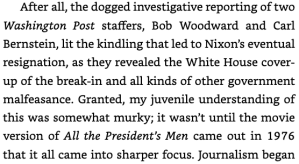
From Newsroom Confidential
Sullivan’s memoir, titled Newsroom Confidential, also claims that Woodward and Bernstein “revealed the White House coverup of the [Watergate] break-in.”
Revealed the coverup? Not quite.
As Columbia Journalism Review noted in an otherwise hagiographic article in July 1973 about the Post and Watergate:
“The Post did not have the whole story [of Watergate], by any means; it had a piece of it. Woodward and Bernstein, for understandable reasons, completely missed perhaps the most insidious acts of all — the story of the coverup and the payment of money to the Watergate defendants to buy their silence.” [Emphasis added.]
The journalism review quoted Woodward as saying this about missing the coverup and hush-money payments:
“It was too high. It was held too close. Too few people knew. We couldn’t get that high.”
More from Media Myth Alert:
- The heroic-journalist myth of Watergate
- Mythmaking in Moscow: Biden says WaPo brought down Nixon
- The Post ‘took down a president’? That’s a myth
- The Nixon tapes: A pivotal story that WaPo missed
- A ‘certain American newspaper brought down a certain president’
- On bringing down Nixon
- If not for the Post’s digging …
- NYTimes errs, claims Woodward, Bernstein ‘unraveled’ Watergate
- Inflating the exploits of WaPo’s Watergate reporters
- Carl Bernstein, at it again
- Watergate myth, extravagant version: Nixon was ‘dethroned entirely’ by press
- Say, CJR: Never hurts to check your archives
- ‘Follow the money’: A made-up Watergate line
- Our incurious press
- ‘Getting It Wrong’ goes on Q-and-A


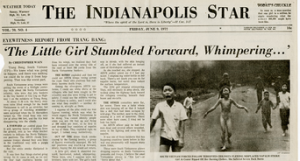
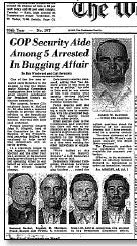
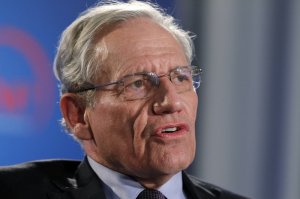
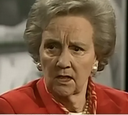
 E&P, as it’s called, traces its pedigree to the late 19th century but is hardly much of a force these days. It nearly went out of business 12 years or so ago and more recently was
E&P, as it’s called, traces its pedigree to the late 19th century but is hardly much of a force these days. It nearly went out of business 12 years or so ago and more recently was 



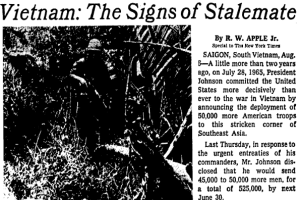 The New York Times, in an analysis published August 7, 1967, declared “the war is not going well. Victory is not close at hand.”
The New York Times, in an analysis published August 7, 1967, declared “the war is not going well. Victory is not close at hand.”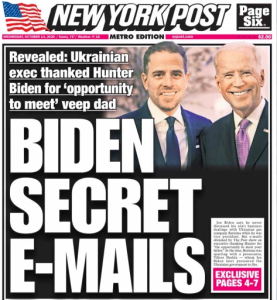 “Not so much anymore.”
“Not so much anymore.”
 The producers most likely
The producers most likely 
 nd Wisconsin.
nd Wisconsin.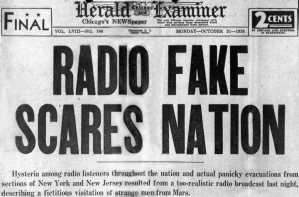 ing Martians wielding deadly heat rays. So vivid and frightening was the program that tens of thousands of Americans were convulsed in panic and driven to hysteria.
ing Martians wielding deadly heat rays. So vivid and frightening was the program that tens of thousands of Americans were convulsed in panic and driven to hysteria.